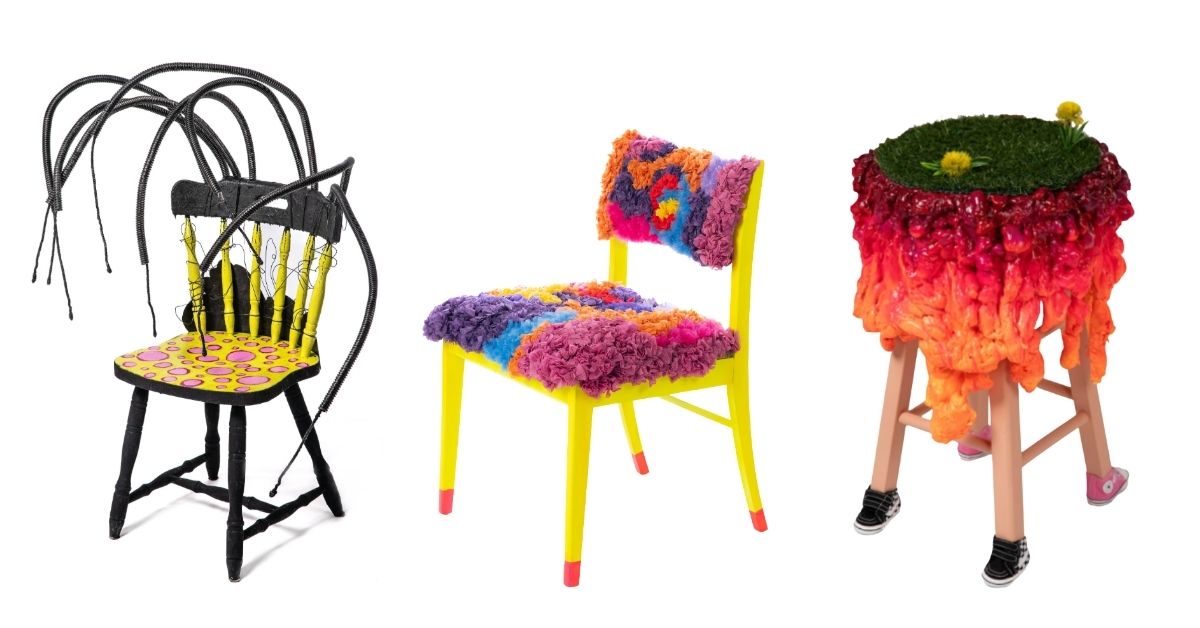Art has long been at odds with war, as opposing forces of creation and destruction rule humanity.
The Berlin Wall was covered in public art and graffiti. Battle paintings depict the events of the Revolutionary War. Protest signs from recent years are now memorialized in art museums across the country.
In the 1960s, a common phrase echoed as an anti-war mantra: “Make love, not war.” The sentiment was widely used and later influenced artists Bob and Roberta Smith to create their piece: “Make art, not war” in 1997.
"Art is a tool for resistance, yes, but it is also a tool for peace, reconciliation, and healing in response to histories of colonization, violence, and corruption."
Art is a tool for resistance, yes, but it is also a tool for peace, reconciliation, and healing in response to histories of colonization, violence, and corruption.
In fact, populations across the globe have begun reclaiming and reviving art that once stemmed from violence.

The New York Times reports that 90 percent of Africa’s cultural heritage is believed to be located in the west, in major museum collections.
Museums are a public good that often depict meaningful heritage, history, and culture, however, many of them are also an eerie mausoleum dedicated to violent histories of war, imperialism, and genocide.
For example, while the British Museum is home to beautiful European and English treasures, guests can also walk through African and Native American exhibits, only to realize the artifacts and collections do not belong to the ornate hallways, but rather to populations that have been irreparably harmed by British colonialism.
This is why historians are urging museums to return stolen artifacts to their countries of origin. And, good news: they’re doing it.
In 2021, France returned 26 looted artifacts and artworks to the West African nation Benin that were originally seized by soldiers in 1892.
The works included doors of the Palace of Abomey, royal thrones, and warrior dance staffs, and their return signals a future for restitution across Europe.
Other European countries have also begun this process, as select museums in the United Kingdom, Amsterdam, and Germany work to return artifacts to their rightful owners.
Costa Rica archaeologists were also surprised when the Brooklyn Museum returned 1,305 artifacts to the country in the summer of 2021. This included a tombstone of an important leader from a now-extinct civilization that Costa Rican historians had only ever seen in books.
Just like the President of Benin, Patrice Talon, said upon the return of his country’s stolen goods: “This return is a testimony to what we have been, a testimony to that we have existed before.”
The United States also must confront its history of colonization and slavery in its admiration of violent historical figures.
Many states, cities, and government buildings continue to display statues of slave-owning figures and leaders of the Confederacy. These monuments send an ongoing message of dominance and power over Black Americans that must end.
Throughout the Black Lives Matter movement, activists have called for the removal of these confederate monuments, and while it’s taken some time, and has led to continued strife and violence against people of color, lawmakers are beginning to respond.
In Charlottesville, Virginia, a torn-down Robert E. Lee monument will be melted down into metal ingots — raw material that can be used to create new art.
The community will select an artist to create a public piece to go back into the city, hopefully to be completed by 2026, according to Smithsonian Magazine.
Jalane Schmidt, a historian and director of University of Virgina’s Memory Project (a program which studies the memory and violence of white supremacist attacks on Charlottesville in 2017) said: “Our community will confront white supremacy with creativity. Beauty will heal the ugliness of the past.”
Violence is not only being fought through visual art, but in music, as well. A Serbian artist, Nikola Macura, creates musical instruments from discarded war equipment and weaponry.
He finds his materials in military junkyards, a common sight in the area, still recovering from wars in Yugoslavia in the 1990s.
Macura has successfully converted a bazooka and army gas bucket into a cello, created a guitar out of a rifle and helmet, and has assembled a violin from an assault rifle magazine and first aid kit, according to The Jakarta Post.
His goal is to create a full orchestra that can play throughout the region, offering seats to veterans to become musicians.
In a world where it often seems that there is no shortage of fear, violence, and heartbreak, these artists remind us that there is no shortage of beauty, hope, and renewal, either.
A version of this article was originally published in The Art Edition of the Goodnewspaper.
Get your own Goodnewspaper by becoming a good news subscriber today.





